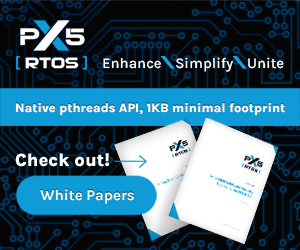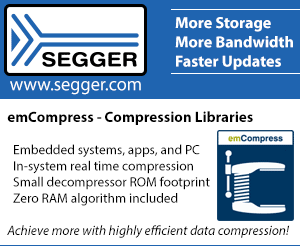
By Jack Ganssle
Intel Buys Wind River
Intel is the greatest IC company of all time. They invented the microprocessor, the embedded systems industry, the in-circuit emulator, and many more elements of this business. Most of their business decisions have been shrewd and effective.
But I have trouble understanding the latest, their pending $884 million acquisition of Wind River.
Intel is working hard to establish a strong presence in the embedded market, one they created but later mostly ignored in favor of high-margin desktop components. The Atom processor, for instance, is in part targeted at this industry. So buying the largest embedded tools vendor at first glance makes sense.
But what does Wind do for Intel?
It's not profits. Wind River has struggled with profitability for years, in their good years generally squeaking out income in the few percent of revenue range.
It's not revenue. Wind's $300 million or so in sales merely a flyspeck compared to Intel's nearly $30 billion.
Is it Wind River's excellent toolchain? Perhaps. Intel has been in the tool business before, but now has largely, though not entirely, left it to third parties.
Is it Wind River's Linux support? Maybe, but it's hard to imagine spending $880m to sell free software.
Maybe Intel feels they need an RTOS. Except they've tried that before with iRMX and eventually sold the product line.
Wind River's VxWorks is everywhere, and is available on a number of different architectures, including the x86. I find it inconceivable that Intel would want to support other vendors' chips, so suspect that over time VxWorks support will be pruned to just the x86.
That's scary for customers using VxWorks on non-Intel platforms. It's a very common RTOS in the space business - but, too my knowledge, there are no radiation-hardened versions of Intel's Atom or other mainstream processors. Perhaps Intel will introduce a rad-hard Atom. But that seems poor business, considering the cost of hardening versus paltry market size.
Space is a natural gala market for tool vendors, but it illustrates the tension between tool and chip vendors. Lots of design seats means plenty of revenue for the tool folks, but extraordinarily low volumes translate into insignificant sales for the IC companies.
The only bright spot I can see for Intel lies in Wind River's support for multicore processors. It's clear that Intel and others see multicore as the future.
But multicore is, in general, not a good match for embedded systems. As I've written here (http://embedded.com/columns/technicalinsights/205918952) the symmetric multiprocessing favored by mainstream CPU vendors does not scale well in most embedded applications.
What do you think? Is this marriage a match made in heaven?



